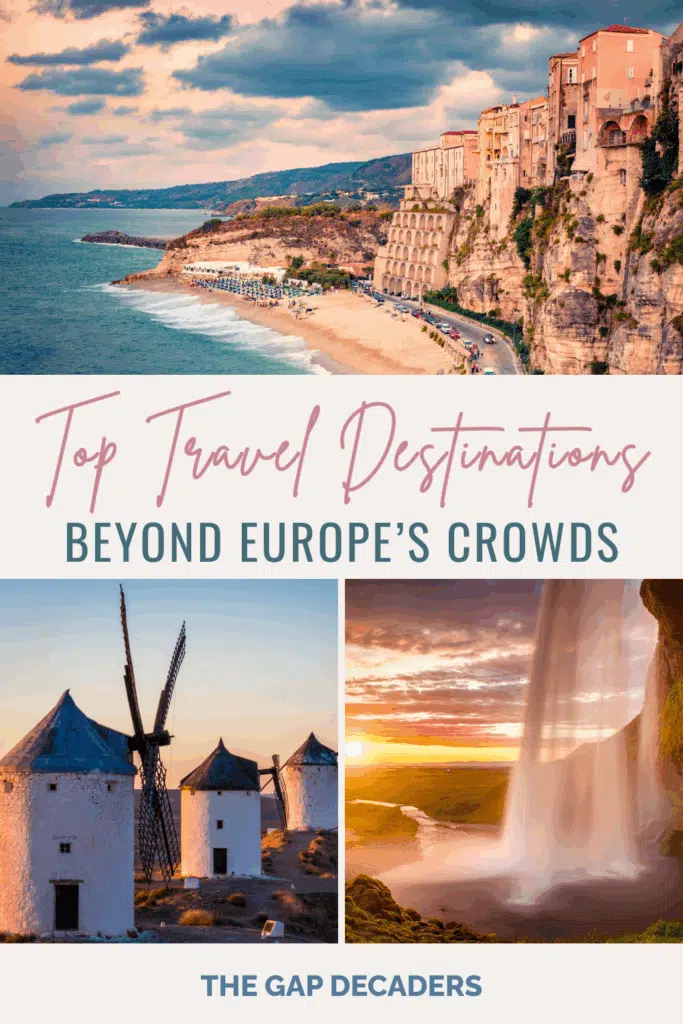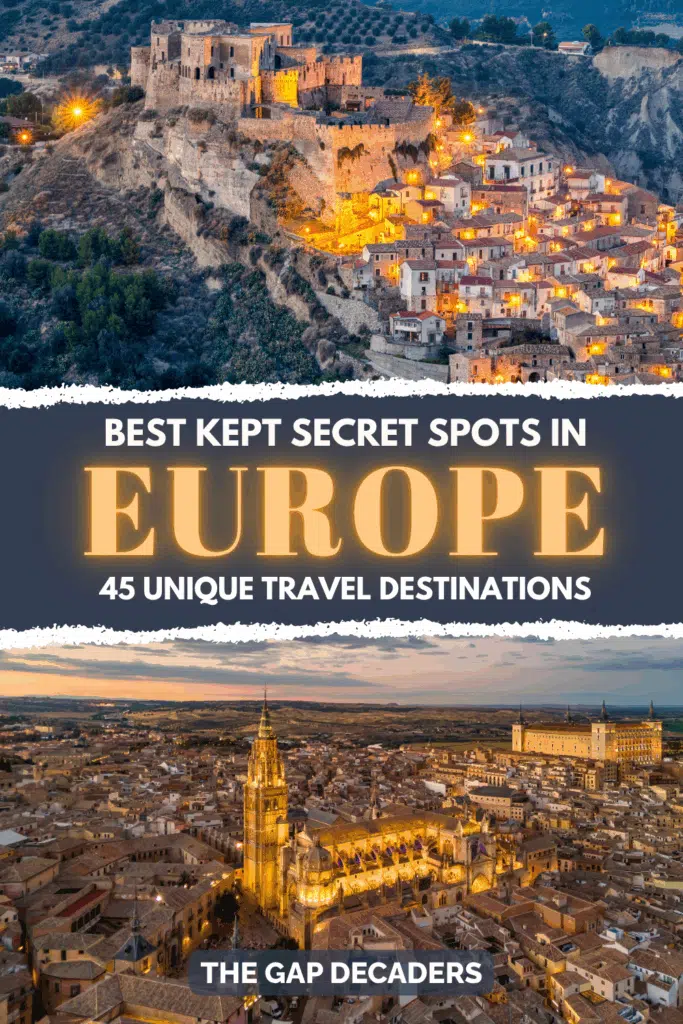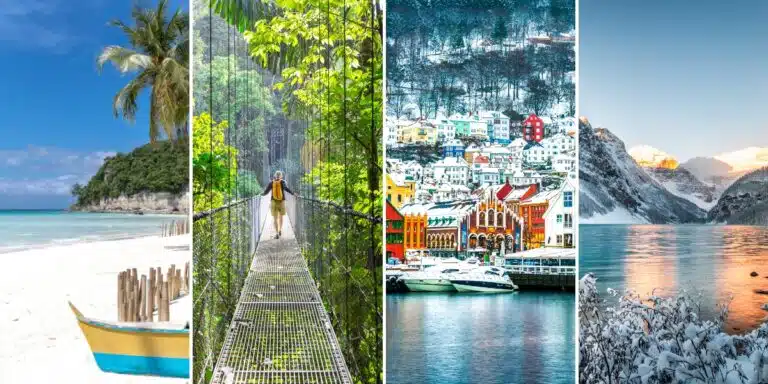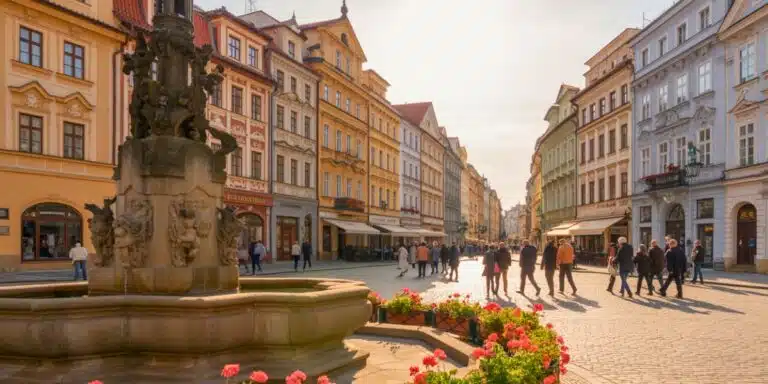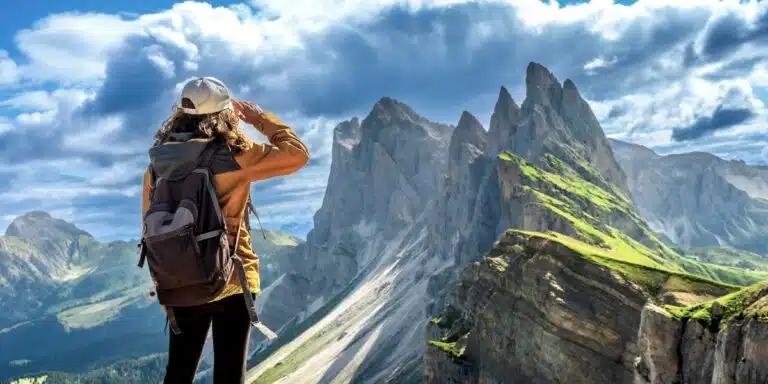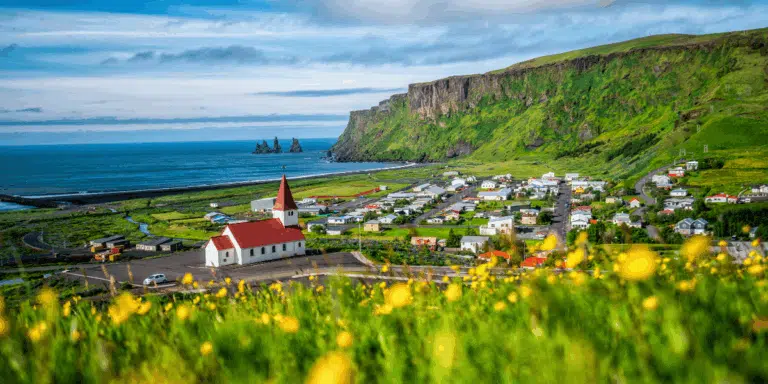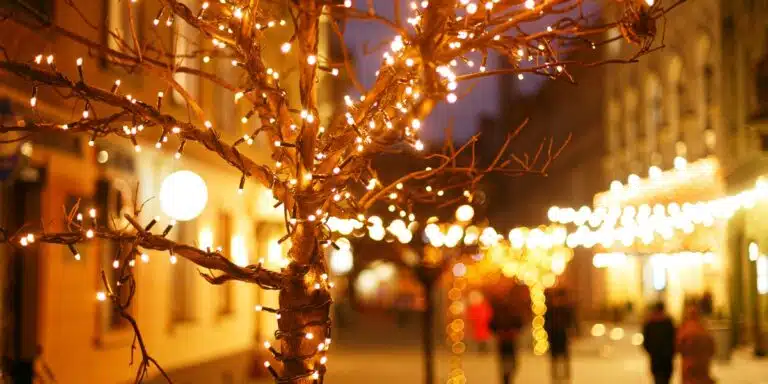This post may contain affiliate links, from which we earn an income. Click here to read our affiliate policy.
Europe is full of beautiful travel destinations, from world-famous capitals to hidden corners that most people never see. While the big-name cities have their charm, they can also be crowded, expensive, and a little overwhelming. If you have ever dreamed of a slower pace, authentic experiences, and stumbling upon places that feel like secrets, it is time to start thinking differently about where you go.
Our travel guide is not about ticking off iconic landmarks and hidden gems for the sake of it, it is about finding those under-the-radar spots that remind you why you fell in love with travel in the first place. Whether you are looking for lesser-visited spots in Europe’s top tourist destinations, seeking the quieter countries of the continent, or simply hunting for new vacation places to add to your bucket list, these offbeat travel locations across Europe will spark ideas for your next trip.
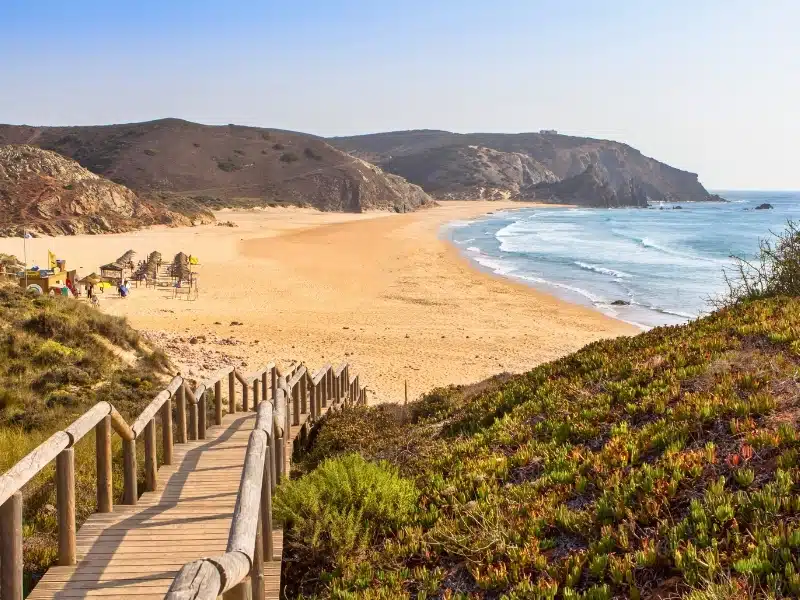
Hiring a car is not the only way to explore these unique places, but it is often the best. Public transport can be patchy once you leave the big cities, day trips are expensive, and many of these regions are simply easier to reach by road.
Plan flexible routes that link your chosen spots, find the nearest airport and book your hire car (whenever we travel to a country without our own transport, we book with Rentalcars.com because they are always best on price and offer a solid and reliable service). Once you’re on the way, you can stop and explore, travel at your own pace and see way more of Europe than you would ever do otherwise.
France
France recently encouraged travelers to skip its busiest attractions, which still leaves plenty of the most beautiful travel destinations in Western Europe open for discovery. Hidden villages, vineyards, and rolling hills await those willing to venture beyond Paris or the Riviera.
For a taste of rural charm, plan a French road trip that avoids toll highways. Wind through medieval old towns, enjoy leisurely lunches, and savor olive oil tastings that feel far from the tourist trail.
Hérault: In the heart of Occitanie, Hérault combines Mediterranean beaches and unspoilt cities with wild hinterlands. Cathar castles crown the hills, while limestone gorges and rivers invite kayaking, swimming, and lazy summer picnics. It is southern France at its sun-soaked, adventurous best.
Bourgogne-Franche-Comté: This historic region, known worldwide as Burgundy, blends fine wine, rolling countryside, and deep tradition. Vineyards spread across the plains, while the Jura mountains bring lakes, forests, and a taste of the outdoors on the French-Swiss border.
Atlantic Coast: France’s Atlantic coast is all about wide-open beaches, surf culture, and lively towns. Biarritz, Arcachon, and La Rochelle serve up long sandy stretches alongside markets, seafood, and a cosmopolitan spirit, perfect for a seaside escape or solo travel adventure.
RELATED POST: Off The Beaten Path France: 8 Unique Places
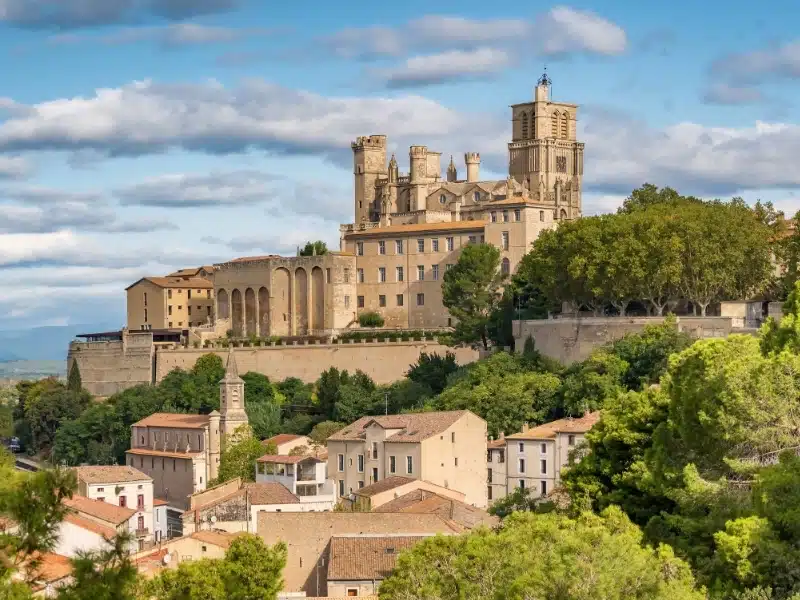
Make sure you have travel insurance you can trust when you visiting Europe. We recommend True Traveller for their 5-star TrustPilot reviews, variety of cover options, best activities cover as standard, great prices, and excellent service.
Spain
Spain is projected to overtake France as Europe’s most visited country, but there is still time to explore its lesser-known treasures. Beyond the sun-drenched costas, you will find mountain ranges begging for hikers, historic cities tucked into the heart of the country, and a rugged Atlantic coastline alive with wild beauty.
Take a road trip through Spain, where adventure awaits, with fiery culture, hidden landscapes, and a chance to see the country at its most authentic before the crowds shift inland.
Cabo de Gata: Tucked into Andalucía’s southeastern corner, Cabo de Gata is all about raw beauty: volcanic cliffs, hidden coves, and protected crystal-clear waters. The fishing villages here still move at their own rhythm, and the stark desert landscapes make it one of Spain’s most dramatic coastal escapes.
Picos de Europe: Small but perfectly formed, Northern Spain’s most famous mountains rise in jagged limestone peaks, where green valleys meet sheer cliffs and stone villages cling to the mountainsides. Hiking trails and cable cars open up sweeping views, while local cheeses and cider keep the region’s traditions alive.
La Mancha: The heartland of Spain wows with wide plains, rolling vineyards, and the iconic white windmills made famous by Cervantes Don Quixote. It is a land of hearty food, rich wines, and timeless villages, offering a slower pace that feels deeply tied to Spain’s rural soul.
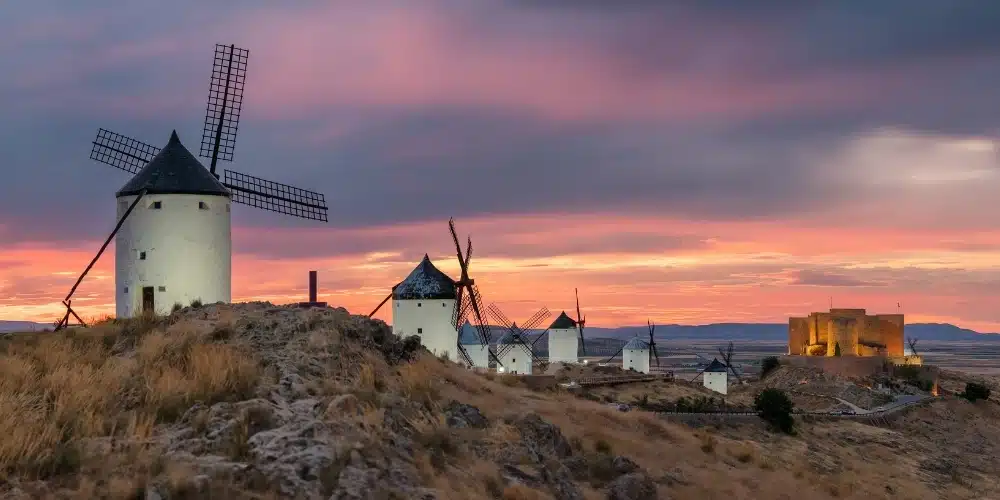
Italy
Italy’s iconic cities draw millions, yet there are countless ways to experience a quieter side of the country. A drive through Tuscany reveals terraced vineyards and hilltop villages, especially if you choose rustic agriturismos over traditional hotels.
Much of Italy is firmly in the spotlight, with millions drawn to Rome, Venice, and Florence each year. But if you look past the obvious, you will find a different Italy waiting. Rural hills dotted with medieval villages, little-visited coastlines, and rural offer authentic culture and landscapes without the crush of crowds.
Calabria: At the toe of Italy’s boot, Calabria is wild, rugged, and blissfully underexplored. Crystalline seas wash up against dramatic cliffs, while inland, you will find mountain villages frozen in time. Tropea’s golden beaches and the Sila National Park make Calabria perfect for those chasing Italy without the crowds.
Puglia: Puglia stretches along the Adriatic with whitewashed towns, olive groves, and trulli houses that look like they belong in a fairytale. The food is rustic and full of character, from orecchiette pasta to fresh seafood. Coastal towns like Polignano a Mare and Monopoli offer cliffside views and local life at a gentler pace than Italy’s tourist-heavy north.
Abruzzo: Abruzzo is Italy’s green heart, where mountains, forests, and national parks cover much of the land. Medieval hill towns perch above valleys, with culture and traditions here feeling deeply rooted.
RELATED POST: Southern Italy: Discover the Best 33 Places To Visit
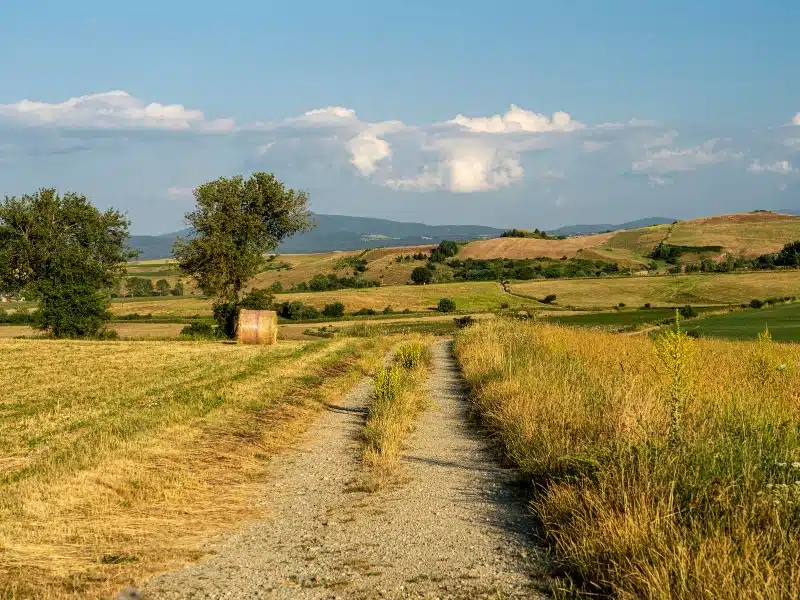
Austria
Austria may be best known for Vienna’s imperial grandeur and Salzburg’s musical pedigree, but beyond the cities lies a country made for slow exploration. Alpine peaks, quiet lakes, and valleys lined with vineyards show a more intimate side of Austria, where nature and tradition blend seamlessly.
Travel here is easy and rewarding. Small towns are connected by scenic railways and good roads, mountain trails are well-marked, and family-run guesthouses keep the experience authentic. Austria is a country where you can leave the tourist crowds behind without ever straying far from comfort.
Styria: Called the “green heart of Austria,” Styria is a region of forests, vineyards, and thermal spas. Graz, the capital, has a youthful energy, while the countryside is dotted with castles, hiking routes and the fabulous South Styria Wine Road, all of which stay pleasantly off the radar.
Zillertal Valley: South of Innsbruck, the Zillertal Valley is a year-round destination with alpine meadows in summer and snow-covered slopes in winter. It is less busy than Austria’s big-name resorts, with traditional villages and dramatic mountain views at every turn.
Wachau Valley: Just west of Vienna, the Wachau Valley is a stretch of the Danube lined with vineyards, abbeys, and fortified towns. Known for its white wines and gentle scenery, it is best explored by bike or boat, offering a peaceful counterpoint to Austria’s grand cities.
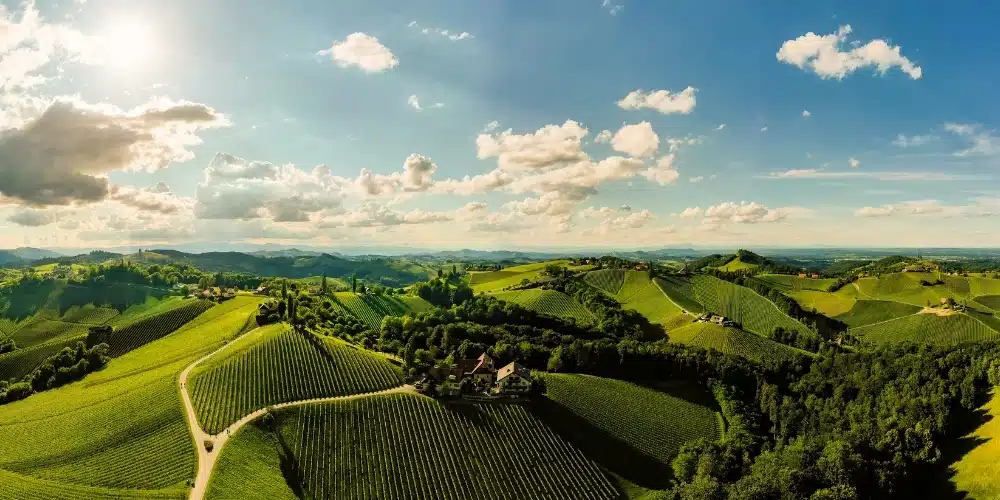
United Kingdom
The United Kingdom is often defined by its headline acts: London’s landmarks, Edinburgh’s festivals, Oxford and Cambridge’s storied universities. But beyond the familiar, the country is full of landscapes and regions that still feel underexplored. From wild coastlines to mountain ranges and timeless villages, the UK has plenty of corners where you can step away from the tourist trail.
Travel is straightforward thanks to public transport and well-marked walking routes, yet the real magic comes in slowing down. Road trips, coastal walks, and pub stops in tiny hamlets show off a more intimate side of the UK, where history and nature meet in surprising ways.
Northumberland: Along England’s northeast coast, Northumberland mixes sweeping beaches with castle ruins and Roman history. Bamburgh Castle stands proudly above the shore, while the surrounding countryside offers dark skies for stargazing and some of the quietest landscapes in the country.
Northern Ireland’s Causeway Coast: Northern Ireland remains one of the UK’s most underrated regions, and the Causeway Coast is its star. From the hexagonal stones of the Giant’s Causeway to dramatic sea cliffs, ruined castles, and quiet fishing villages, it offers a mix of raw scenery and rich legend without overwhelming crowds.
Outer Hebrides: Off Scotland’s northwest coast, the Outer Hebrides feel remote and otherworldly. An archipelago of over 50 islands, 19 of which are inhabited, the islands are known for their white-sand beaches, Gaelic-speaking communities, and vast moorlands. Lewis and Harris, North Uist, Benbecula, South Uist, and Barra some of Europe’s most unique places, and their far-flung location ensures a slower pace. It is one of the last places in the UK where you can still find true solitude.
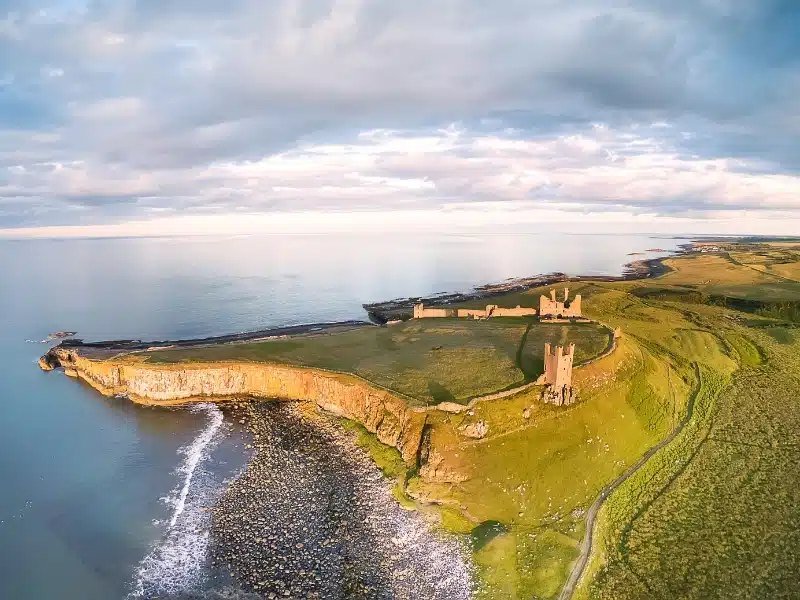
Germany
Germany is one of Europe’s most rewarding destinations for travelers who like variety. Big-name cities like Berlin and Munich showcase modern culture and deep history, yet much of the country remains blissfully underexplored. With fairy-tale towns, rolling wine country, and mountains that invite road trips, Germany has a knack for surprising anyone who ventures beyond the obvious.
What makes Germany stand out is how easy it is to explore once you step off the beaten track. A web of regional trains and well-marked roads lead you to charming half-timbered villages, medieval castles, and dramatic natural parks that feel far from the tourist rush.
Moselle Valley: Less crowded than the Rhine, the Moselle Valley winds through vineyard-covered hills dotted with tiny villages and hilltop castles. The river bends create endless photo opportunities, and wine tasting here is authentic and affordable, so typical of this underrated destination.
Frisian Islands: Stretching along Germany’s North Sea coast, the Frisian Islands (also known as the Wadden Islands) are windswept, sandy, and wonderfully low-key. Each island has its own character, from car-free Langeoog and nature-rich Föhr to the most famous, Sylt, with wide beaches, birdlife, and a slower pace that feels far from the bustle of the mainland.
Harz Mountains: In the center of Germany, the Harz Mountains are a mix of dense forests, timber-frame towns, and folklore. Trails wind up to the Brocken, the region’s highest peak, once said to be a gathering place for witches. Villages like Wernigerode and Goslar add medieval charm, while narrow-gauge steam trains still puff their way through the valleys.
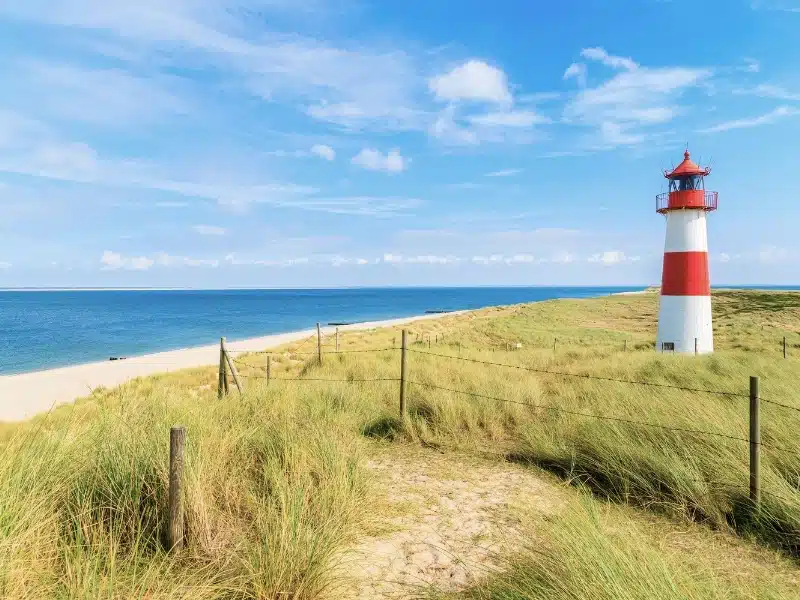
Greece
Greece often conjures up Santorini sunsets and Athens’ ancient ruins, but the country’s diversity runs much deeper. Beyond the famous islands and historic landmarks, you will find remote villages, wild mountains, and coastlines where life still moves at a gentle pace.
Exploring Greece off the beaten path means swapping cruise ship stops for places where tradition is alive and landscapes feel untamed. Whether inland or on little-known islands, there are plenty of corners that deliver the best of Greece without the rush.
Pelion Peninsula: On the Aegean coast, the Pelion Peninsula mixes mountain villages with hidden beaches. Stone houses, forested hills, and quiet coves make it feel far removed from the busier islands, and it is a favorite summer escape for Greeks themselves.
Zagori: In northern Greece, the Zagori region is a land of deep gorges, stone bridges, and timeless villages. Vikos Gorge offers incredible hiking, while the local architecture and traditions give the area a strong sense of identity.
Ikaria: Far out in the Aegean, Ikaria has gained fame for its residents’ longevity, but it is also one of Greece’s most relaxed islands. Days here revolve around swimming, hiking, and long communal meals, with a lifestyle that is both authentic and restorative.
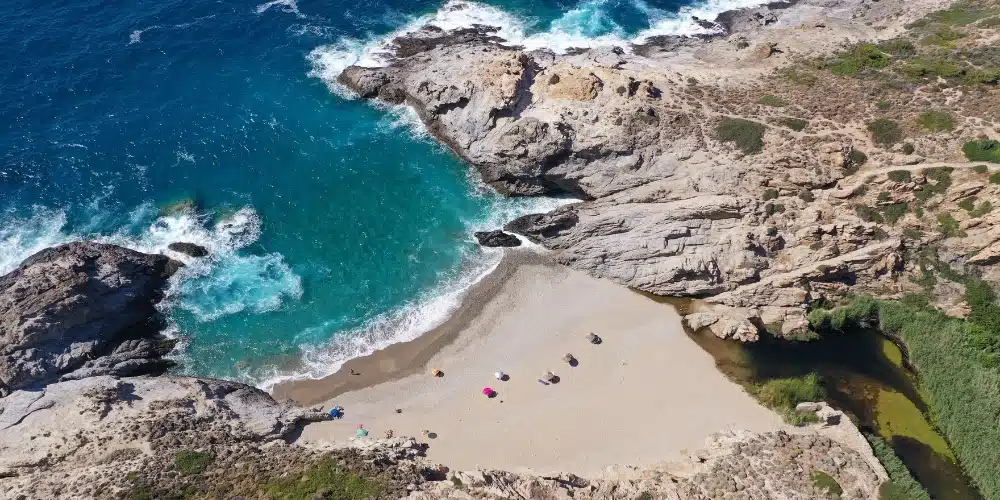
Portugal
Portugal may be small, but it packs in a surprising variety of landscapes and culture. Along the coast, golden beaches and fishing villages sit side by side with surf towns and lively cities like Lisbon and Porto.
Inland, vineyard-covered hills and medieval towns bring a slower rhythm, while UNESCO sites and centuries of history are never far away. You can sip wine in a family-run quinta, walk cobbled lanes where laundry still flutters overhead, then head straight into cutting-edge galleries or buzzing nightlife.
Alentejo: Stretching across much of southern Portugal above the Algarve, the Alentejo is a land of rolling plains, cork oak forests, and whitewashed towns. Life here moves slowly, shaped by farming, wine, and tradition. Évora, the UNESCO regional capital, adds a dose of history, and the Alqueva Dam has some of the best night skies in Europe.
Minho: In Portugal’s far north, Minho is a region of green valleys, granite villages, and endless vineyards. It is the birthplace of Vinho Verde, the crisp young wine that perfectly matches the fresh seafood served along its coast. Inland, rivers and mountains set the scene for hiking and kayaking, while towns like Braga and Guimarães layer Roman roots, medieval charm, and lively festivals.
Atlantic Algarve: Away from the busy resorts of the south, the Atlantic coast of the Algarve feels wilder and more remote. Towering cliffs, rolling surf, and windswept beaches make it a favorite with surfers and nature lovers. Villages like Sagres and Carrapateira keep a laid-back vibe, while the Costa Vicentina’s protected coastline offers some of Portugal’s most dramatic seascapes.
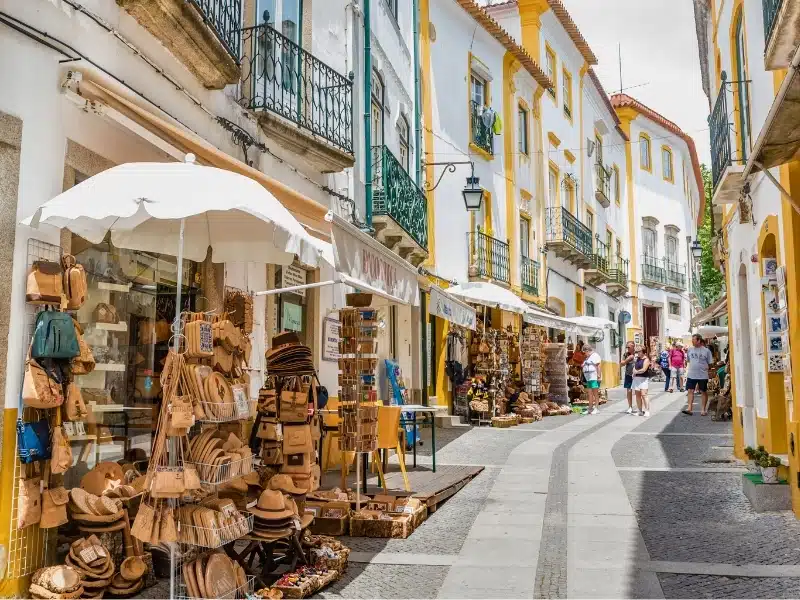
Croatia
Croatia’s Dalmatian coast has become one of Europe’s biggest draws, with Dubrovnik and Split pulling in visitors by the million. Crystal-clear seas, medieval towns, and sun-drenched islands have put the country firmly on the map, but that popularity also means packed streets and inflated prices in the most famous spots.
Look a little further, though, and Croatia still has plenty of quieter corners waiting to be explored. Inland hills dotted with vineyards, sleepy fishing villages, and remote islands show off the country’s authentic side.
Kornati Islands: South of Zadar, the Kornati Islands are a maze of rocky islets and hidden coves scattered across the Adriatic. This protected national park is best explored by boat, where you can sail between barren cliffs, dive into clear waters, and find tiny fishing villages that feel worlds away from the busy resorts.
Inland Istria: While most visitors stick to Istria’s coastline, the inland hills reveal medieval towns, truffle-rich forests, and a slower, more authentic pace. Villages like Motovun and Grožnjan perch above vineyards and olive groves, offering sweeping views and a taste of rural life shaped by centuries of tradition.
Pelješac Peninsula: Just north of Dubrovnik, Pelješac remains under the radar despite its dramatic coastline and famous wines. Ston, with its crumbling city walls and salt pans, is a fascinating stop, while quiet beaches and family-run wineries make the peninsula ideal for those wanting to escape the cruise ship crowds.
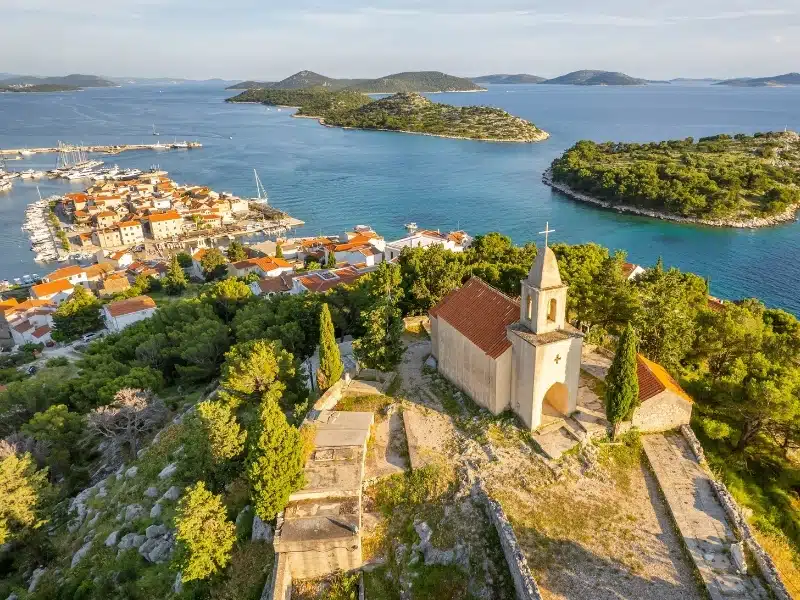
Poland
Poland is often associated with its big-name cities like Kraków, Warsaw, and Gdańsk, but beyond those headline destinations lies a country rich in landscapes and traditions that most visitors never see. From quiet lakes to mountain trails and medieval towns, Poland rewards travelers who step outside the usual itinerary.
What makes Poland so appealing off the beaten path is its balance of accessibility and authenticity. Excellent rail and road networks make it easy to get around, yet the regions away from the tourist circuit still feel unspoiled. Here you will find wide open spaces, local markets, and historic corners that capture the country’s spirit without the crowds.
Bieszczady Mountains: In Poland’s far southeast, the Bieszczady Mountains are wild and sparsely populated, with rolling ridges, wooden churches, and a sense of solitude that feels rare in Europe. It is a region for hiking, wildlife spotting, and slowing down.
Masurian Lakes: Known as the Land of a Thousand Lakes, this region in northeastern Poland is perfect for sailing, kayaking, and cycling. Small towns dot the waterways, and summer brings a lively but still relaxed atmosphere compared to the country’s bigger resorts.
Kazimierz Dolny: Perched on the Vistula River, Kazimierz Dolny is a small town with cobbled streets, art galleries, and Renaissance architecture. Popular with Polish artists and weekenders, it remains largely off the international radar and makes for a charming stop between Warsaw and Lublin.
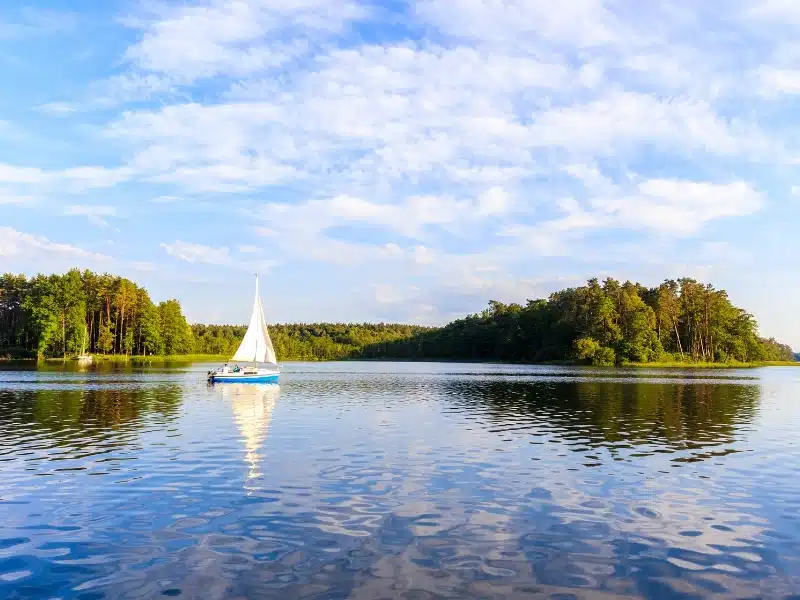
Switzerland
Switzerland’s reputation usually starts with the big names: Zürich, Geneva, Lucerne, and the Matterhorn. But the country is far more than glossy resorts and polished Alpine towns. Venture beyond the obvious, and you will find tucked-away valleys, quiet lakes, and mountain regions where traditional life still shapes the rhythm of daily life.
Travel here is simple thanks to Switzerland’s world-class trains and mountain cableways, but the real joy comes from slowing down. Hiking between small villages, cycling along lakeshores, or tasting cheese in remote dairies brings a side of Switzerland in summer that is both timeless and refreshingly underexplored.
Appenzell: In northeastern Switzerland, Appenzell is a region of rolling hills, painted houses, and strong traditions. Locals still practice age-old customs, from open-air voting to Alpine cheese-making, and the landscapes invite long walks and quiet exploration.
Valle Verzasca: Hidden in Ticino, Valle Verzasca is a valley of emerald-green rivers, stone bridges, and tiny hamlets. Swimming in its clear pools is a summer highlight, and the blend of Italian and Swiss culture makes the region unique.
Graubünden: Switzerland’s largest canton is also one of its most diverse. Graubünden is home to remote valleys, Romansh-speaking villages, and dramatic peaks that feel far removed from the tourist trail. From the quiet beauty of the Engadin to the hiking paths around Vals, it is a region that rewards those who venture east.
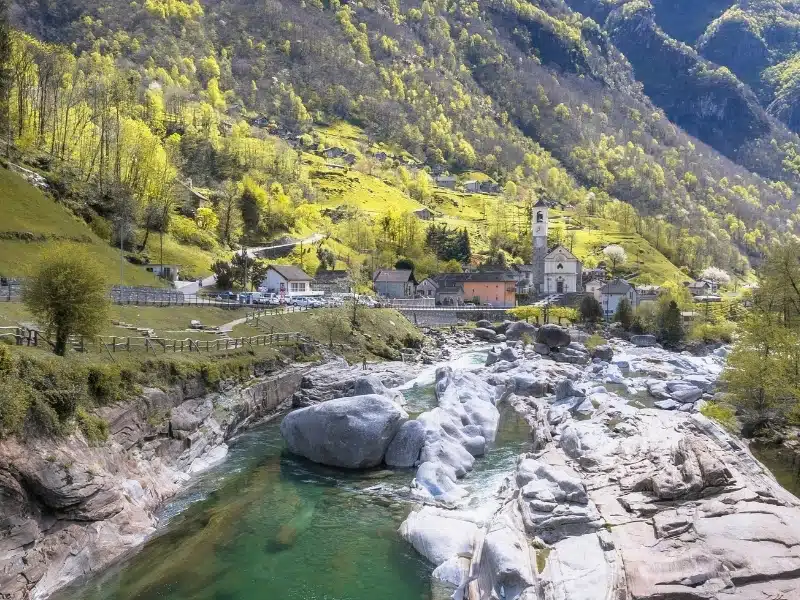
Netherlands
Most people never make it past Amsterdam, which leaves much of the Netherlands refreshingly uncrowded. Charming small cities, windmill-dotted countryside, and endless tulip fields create a photogenic travel aesthetic for those who wander deeper.
Thanks to its excellent rail system, exploring is easy. Within a few hours, you can be soaking up Dutch culture, pristine beaches, and fascinating cities that most people never see.
Friesland: Up in the north, Friesland feels like its own world with a distinct language, culture, and a coastline dotted with the Wadden Islands. Think sailing lakes, endless skies, and wide sandy beaches where you can walk out on tidal flats for miles.
Utrecht: Compact, historic, and less crowded than Amsterdam, Utrecht has canals lined with cafés, a towering medieval cathedral, and a laid-back student energy. It is one of the most walkable and atmospheric cities in the country.
Zeeland: Spread across a series of islands and peninsulas, Zeeland is all about beaches, dunes, and fresh seafood. It is a region made for cycling and coastal road trips, with charming towns like Middelburg and Veere tucked among the water.
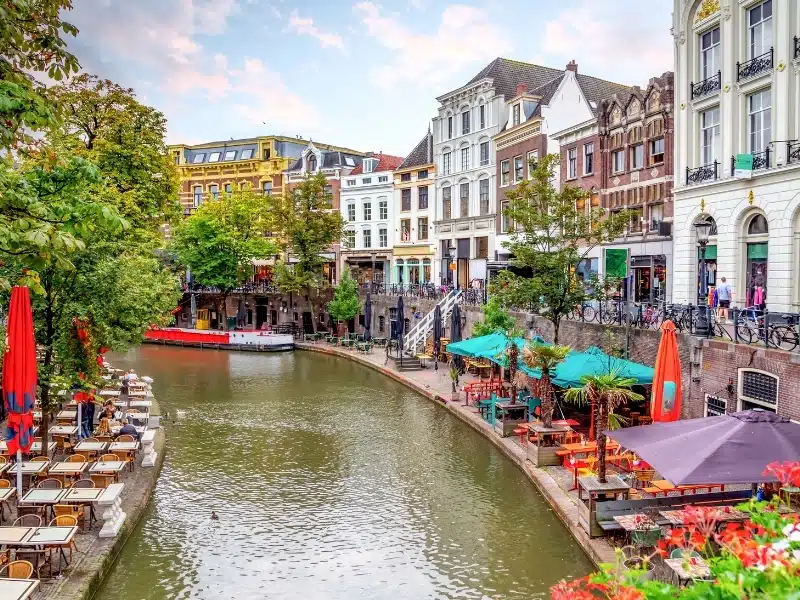
Albania
Albania is still a fresh face in European tourism, a land of untamed scenery and emerging appeal. Expect turquoise springs, Ottoman-era towns, and white-sand beaches that rival the Caribbean.
But the real draw lies in the wilderness. Remote canyons, vast lakes, and jagged mountains reward those ready to go beyond the obvious. This is still one of Europe’s true travel places to visit for seekers of raw adventure, but not for much longer.
Fir of Hotova National Park: Albania’s largest protected area, the Fir of Hotova National Park, is a forested wilderness of valleys, river canyons, and the towering Tomorr Mountains. Remote and rarely crowded, it is a place for long walks, birdwatching, and glimpses of traditional shepherd life far from modern distractions.
Valbona: Deep in the Albanian Alps, Valbona is a mountain village turned hikers’ haven, framed by jagged peaks and alpine meadows. It is the starting point for the legendary Valbona-to-Theth trek, but even without hiking boots, the valley’s sheer scenery is unforgettable.
Lake Ohrid: Straddling the border with North Macedonia, Lake Ohrid is one of Europe’s oldest and clearest lakes. On the Albanian side, the town of Pogradec mixes laid-back lakeside charm with a growing café culture, while the calm waters are perfect for swimming and boat trips.
RELATED POST: Albania Road Trip: Epic 7-10 Day Itinerary
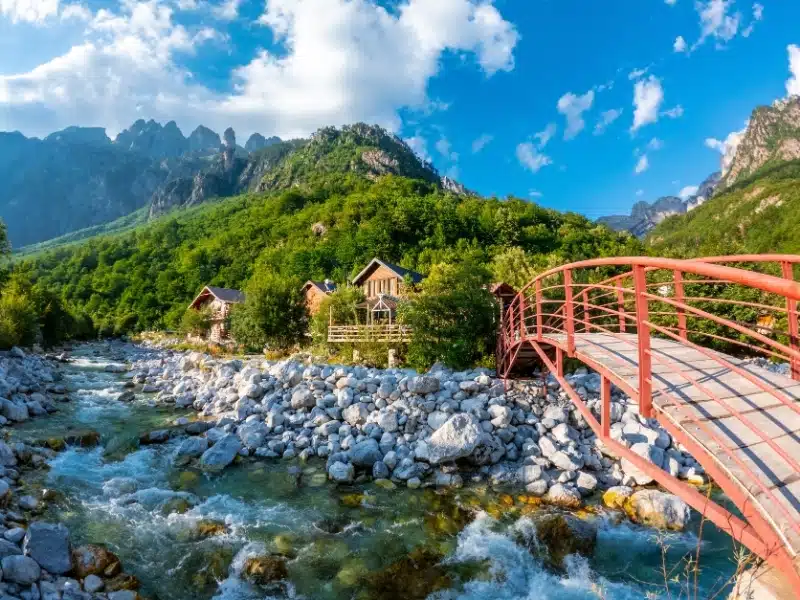
Slovenia
Slovenia remains one of Europe’s best travel destinations for those who want natural wonders without the crowds. The Julian Alps and Triglav National Park dominate the north, where pristine lakes and alpine adventures abound.
Travel south and you will find karst landscapes, underground rivers, and UNESCO-protected caves. This small but diverse country is a photographer’s dream, making it ideal for anyone interested in travel photography tips put to real use.
Soča Valley: Known for its emerald-green river, this valley in western Slovenia is a paradise for rafting, kayaking, and hiking. The landscapes are stunning, yet it still feels quieter than the Julian Alps’ headline spots.
Kozjansko Regional Park: On the eastern side of the country, this biosphere reserve is all about orchards, rolling hills, and traditional farmsteads. A good choice if you want to see Slovenia’s rural side.
Logar Valley (Logarska Dolina): A glacial valley in the Kamnik-Savinja Alps, less visited than Lake Bled but just as breathtaking. Think alpine meadows, towering peaks, and tucked-away guesthouses.
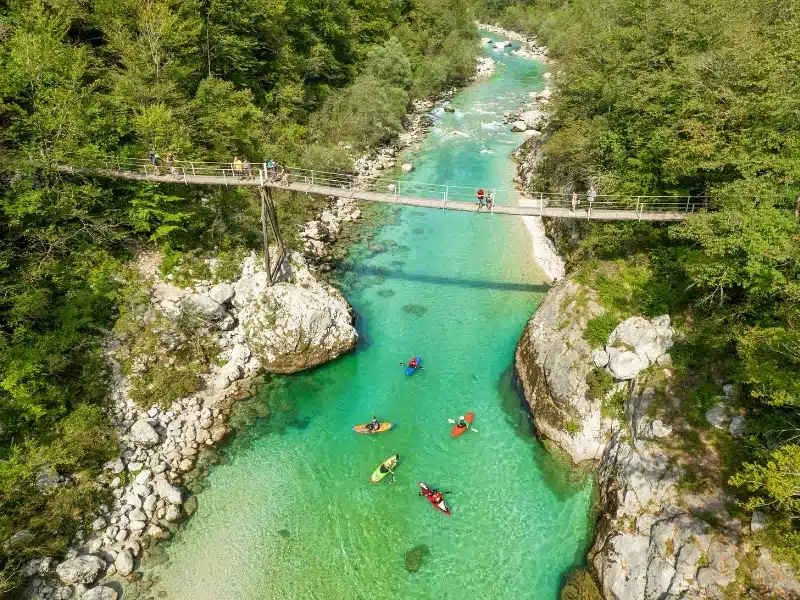
Norway
Norway is where dramatic landscapes steal the spotlight. Towering fjords, glacier-carved valleys, and a coastline that twists for thousands of miles make it one of Europe’s most spectacular destinations. While Oslo and Bergen attract the most attention, much of the country remains refreshingly uncrowded, offering wide open spaces and a sense of real wilderness.
The beauty of Norway lies in how accessible that wilderness feels. Scenic drives, ferries, and hiking trails connect you to places that look impossibly remote yet are easy to reach with a bit of planning. From coastal islands to Arctic mountains, Norway rewards anyone willing to look past the obvious stops.
Kystriksveien Coastal Route: Often called one of Norway’s most beautiful road trips, this route winds along Norway’s northern coast for more than 400 miles. Ferries link islands, mountains rise straight from the sea, and fishing villages offer a glimpse of everyday life above the Arctic Circle.
Senja: Norway’s second-largest island, Senja, has rugged cliffs, white-sand beaches, and fjords that rival the Lofoten Islands but without the same crowds. Hiking trails lead to jaw-dropping viewpoints, while small fishing towns keep a laid-back feel.
Jotunheimen National Park: Inland, Jotunheimen is Norway’s high mountain region, home to the country’s tallest peaks and countless alpine trails. It is a playground for hikers, with routes that take you past glaciers, ridges, and lakes, offering a taste of Norway at its wildest.
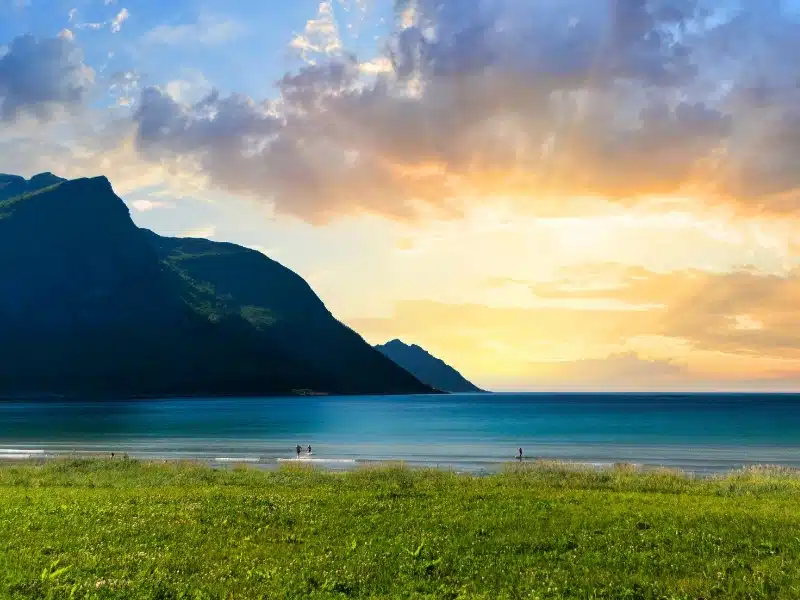
Iceland
Iceland has become famous for the Golden Circle and the Blue Lagoon, but much of the country still feels wild, remote, and unexplored. Beyond Reykjavík and the well-trodden tourist loops, you will find landscapes shaped by volcanoes, glaciers, and lava fields that stretch for miles with barely a soul in sight.
Travel here is best approached slowly. Driving Iceland’s ring road or venturing down smaller routes opens up empty beaches, quiet fishing villages, and natural wonders where the crowds thin out. Iceland off the beaten path is about finding those places where the land feels raw and elemental.
Westfjords: Jutting out into the North Atlantic, the Westfjords are one of Iceland’s most remote regions. Steep cliffs, bird colonies, and dramatic fjords create scenery that feels untouched, with Ísafjörður as a small, welcoming base.
Eastfjords: On the opposite side of the island, the Eastfjords are a land of winding roads, fishing harbors, and mountain backdrops. The villages here are small and authentic, and the fjords themselves offer peaceful hiking and a slower pace.
Landmannalaugar: In the Icelandic Highlands, Landmannalaugar is famous for its colorful rhyolite mountains and natural hot springs. Accessible in summer, it is a hub for trekking routes that lead deep into Iceland’s interior, far from the standard tourist trail.
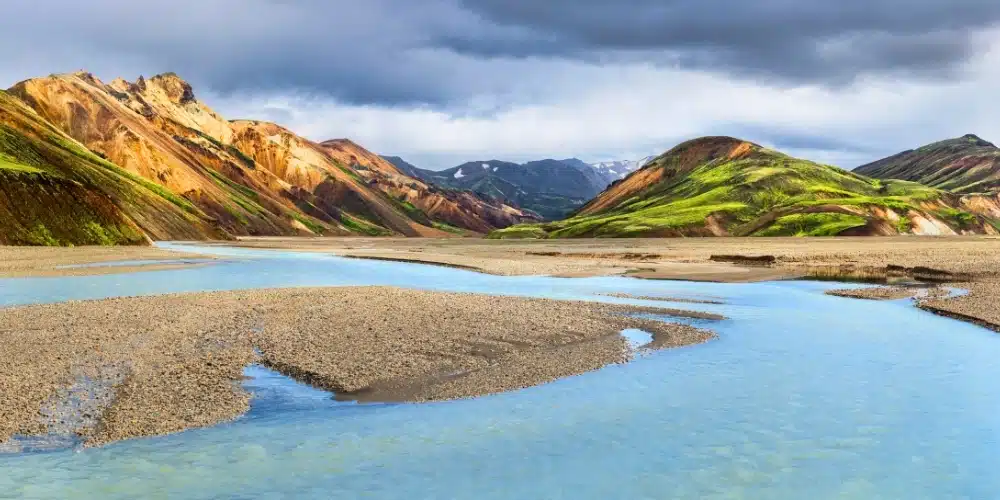
Final Thoughts
Despite the headlines, there is still plenty of Europe that has not been spoiled by mass tourism. Whether you are chasing solo travel adventures, looking for budget travel tips, or planning dream travel destinations for the future, the continent offers countless beautiful travel destinations that still feel like discoveries.
Step off the beaten track and remember: the best travel places to visit are not always the ones everyone is talking about. Sometimes, they are the ones you stumble upon by chance, where authenticity thrives and adventure awaits.
Looking for more European travel inspo? Check out these top posts…
16 of the Best Travel Destinations in January
The 16 Best Second Cities in Europe You Shouldn’t Miss
Adventure Travel Bucket List: 15 Epic Experiences in Europe
The Ultimate Europe Travel Bucket List: 15 Classic Experiences to Inspire Your Next Trip
Europe Coolcations: Best Places to Beat the Heat
Christmas Vacation in Europe: 12 To Spots for a Festive Break
Love it? Pin it!
